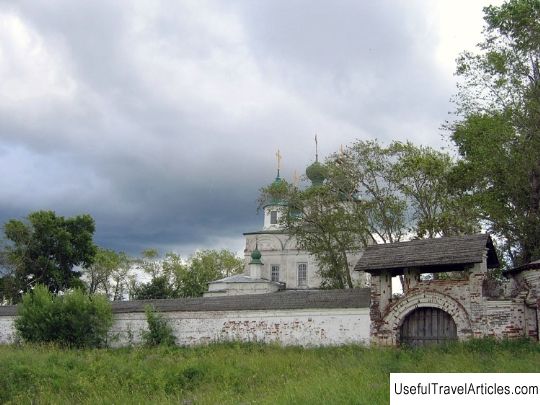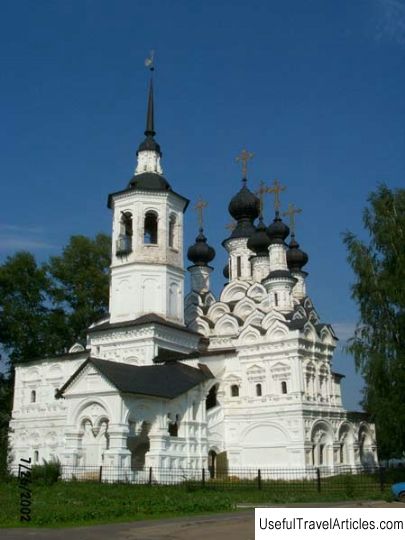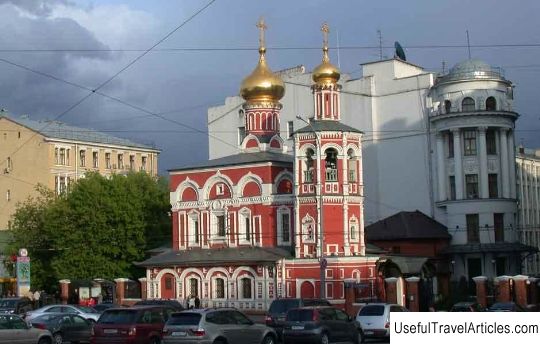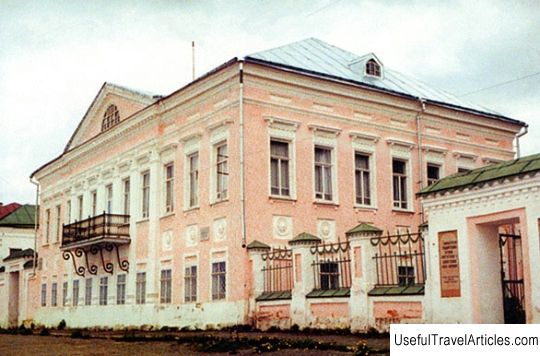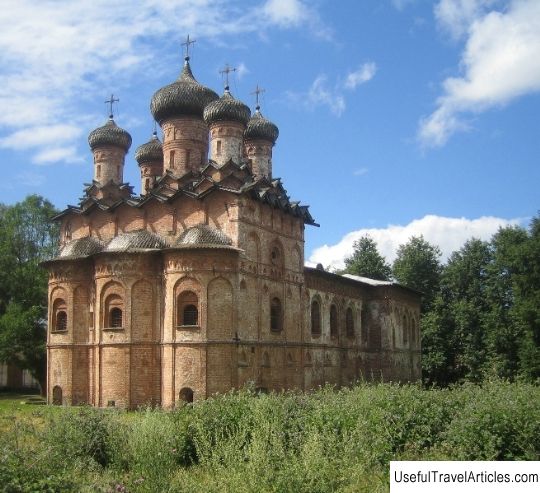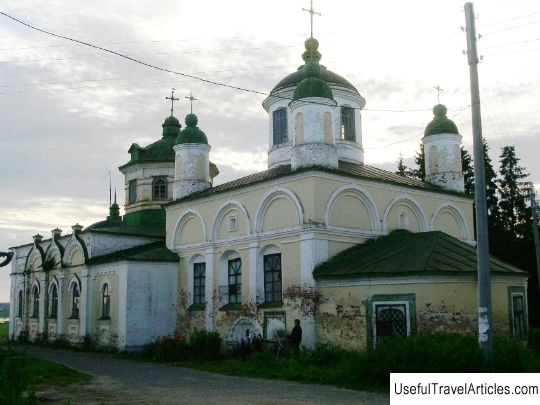Trinity-Gledensky monastery description and photos - Russia - Northwest: Veliky Ustyug
Rating: 9,4/10 (1271 votes) Trinity-Gledensky monastery description and photos - Russia - Northwest: Veliky Ustyug. Detailed information about the attraction. Description, photos and a map showing the nearest significant objects. Photo and descriptionOne of the most ancient monasteries in the north of Russia - the monastery of the Holy Life-Giving Trinity, located near the city of Gleden. This city was founded at the end of the 12th century by Prince Vsevolod. It was located on a hill near the crossroads of river routes. Around the same time, a monastery was built near the city. From the place where the Gleden monastery was located, you can see how the rivers Sukhona and the South join their waters. In ancient times, the main road of the Russian North passed twenty kilometers from this place. The city of Ustyug stands on the Sukhona. The name of the city comes precisely from its location: Ust-Yug. Due to its location, at the crossroads of all roads, it was once one of the main cities of Russia. But at Gleden, the history is more confusing and mysterious. Little information has survived about this city. Traditions and legends make Gleden a glorious and wealthy city. They say that the Tatars, who were tempted by the gold and wealth of the Ustyuzhan people, destroyed it. The surviving documents testify that it was defeated in the middle of the 15th century, as a result of violent civil strife and wars between the Russian princes. After that, the city was never restored, but the men's Trinity-Gleden Monastery was restored by the Ustyuzhans. It was literally revived from the ashes. It existed for a long time, and over the course of several centuries witnessed many more events that took place in these places: the reforms of Peter I, secularization under Catherine II, etc. In 1841 the monastery was abolished, and in 1912 it was reopened as a women's monastery. The final closure took place in 1925. After closing, the monastery buildings were used by a colony for homeless children, then an orphanage-isolation ward was established here. There was also a transit point in the buildings of the monastery, where dispossessed people were kept, and a nursing home. The monastery was built at the end of the 18th century. Then the wealthy Ustyug merchants allocated funds for the reconstruction of the Trinity Cathedral, then the churches of the Assumption of the Mother of God and the Tikhvin hospital chamber were rebuilt. Later, at the beginning of the 19th century, the Trinity Cathedral was connected by a covered gallery with the Tikhvin Church, and the construction of a stone fence began. Unfortunately, due to a lack of money, the fence was left unfinished. It should be noted that almost all the stone buildings of the monastery were not subjected to subsequent alterations, therefore, they retained their original forms unchanged. This fact gives the complex a special value and charm. Art critics unanimously classify it as one of the most perfect monastic ensembles of the Russian North. The main monastery attraction is the delightful gilded carved iconostasis located in the Trinity Cathedral. The carved works of the iconostasis were made by the Totem craftsmen, brothers Nikolai and Timofey Bogdanov. In the design of the iconostasis, they used traditional motives of the 18th century: rocailles, curls, garlands, volutes, etc. The carvings made by them amaze with their richness and amazing variety of forms. The icons are distinguished by their grace and precision of drawing. They were painted by local craftsmen and craftsmen and are distinguished by a rich and extraordinary color palette. Some of the icons were painted by V. A. Alenev, archpriest of the Assumption Cathedral. The composition of the faces differs from the generally accepted canons. In view of the fact that they were copied from printed samples of Western European prints, they are more like secular painting. The gilded robe of the iconostasis gives it a particularly rich and elegant look. It was made by a local team, using a very sophisticated technique, and testifies to the high skill of the performers. The wooden sculpture of the iconostasis depicts four evangelists standing in front of the royal gates, above which the hosts soar high in the clouds. The sculptural composition consists of the heads of cherubim and angels who are standing at the Crucifixion. Carvings, sculptures, icons and gilding are organically combined into one whole and represent a genuine work of art. It is safe to say that the craftsmen who completed the iconostasis had exquisite taste and outstanding skill.         We also recommend reading Resurrection Cathedral description and photos - Russia - North-West: Cherepovets Topic: Trinity-Gledensky monastery description and photos - Russia - Northwest: Veliky Ustyug. |
